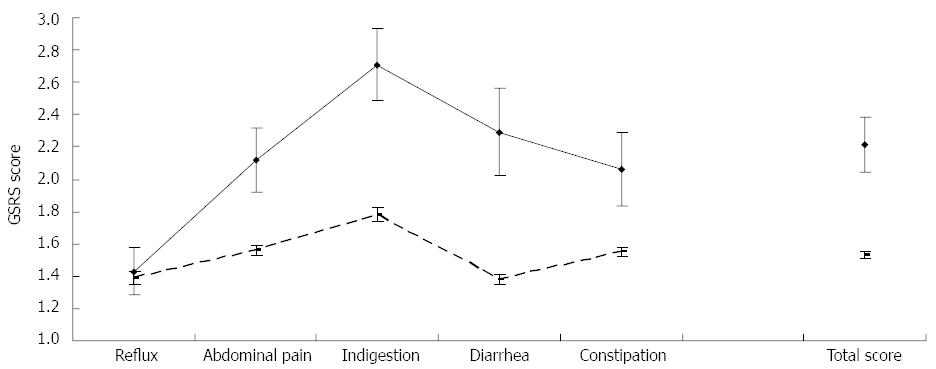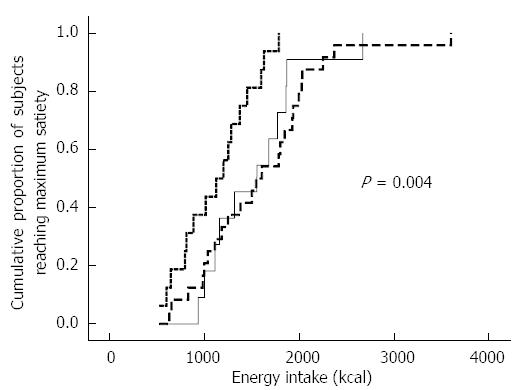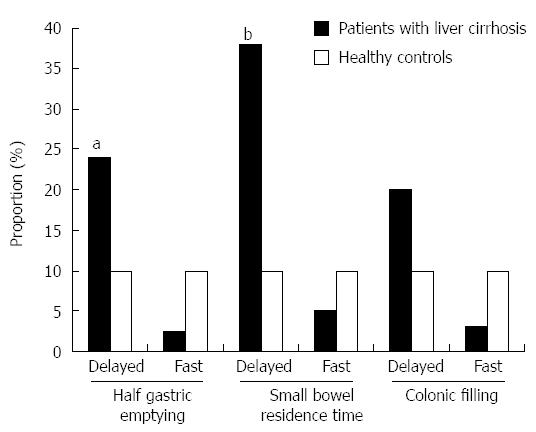Copyright
©2014 Baishideng Publishing Group Inc.
World J Gastroenterol. Oct 28, 2014; 20(40): 14686-14695
Published online Oct 28, 2014. doi: 10.3748/wjg.v20.i40.14686
Published online Oct 28, 2014. doi: 10.3748/wjg.v20.i40.14686
Figure 1 Gastrointestinal symptom severity assessed as gastrointestinal symptom rating scale scores (means and 95%CI) in patients with liver cirrhosis (continuous line, n = 128) and healthy controls (dashed line, n = 2162).
The higher the score in gastrointestinal symptom rating scale (GSRS) the higher the severity of gastrointestinal symptoms. Adapted from the reference [25].
Figure 2 Cumulative percentage of cirrhotics with significant symptoms (n = 16, dotted line), cirrhotics without significant symptoms (n = 24, dashed line) and healthy controls (n = 11, continuous line) reaching maximum satiety during a caloric satiation drinking test.
In a caloric satiation drinking test, subjects are asked to consume a liquid caloric meal at a constant rate, scoring their satiation level at 5-min intervals. The test is terminated when the subject reaches maximal satiation. Adapted from the reference [26].
Figure 3 Frequency of transit abnormalities in patients with liver cirrhosis (black bars, n = 42) and healthy controls (white bars, n = 83).
Reference values were based on percentiles 10 and 90 of the transit values of healthy controls (n = 83) aP < 0.05, bP < 0.01 vs healthy controls. Adapted from the reference [76].
- Citation: Kalaitzakis E. Gastrointestinal dysfunction in liver cirrhosis. World J Gastroenterol 2014; 20(40): 14686-14695
- URL: https://www.wjgnet.com/1007-9327/full/v20/i40/14686.htm
- DOI: https://dx.doi.org/10.3748/wjg.v20.i40.14686











